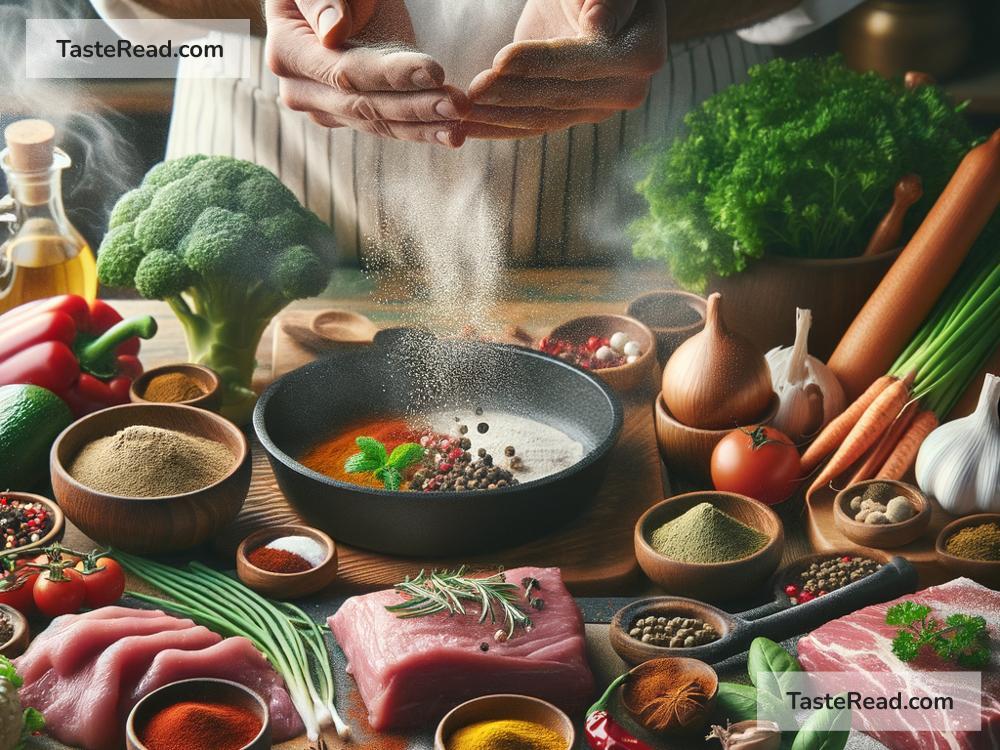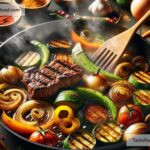The Science of Cooking with Chemical Perception: Techniques and Tips
Cooking is much more than combining ingredients and following recipes. At its heart, cooking is a science that involves chemistry, biology, and physics. One fascinating aspect of this scientific process is “chemical perception”—how our senses detect and respond to the chemical properties of food. By understanding the science behind flavor, aroma, and texture, you can elevate your cooking skills and create dishes that delight the senses. In this article, we’ll look at the science of chemical perception and share practical tips for applying it in your kitchen.
What Is Chemical Perception?
Chemical perception is the ability of our body to detect chemical compounds in food and beverages using taste, smell, and touch. These senses work together to give us the full experience of a dish. For example, when you take a bite of a juicy apple, you taste the sweetness from sugars, smell the fruity aroma, and feel its crisp texture—all contributing to the experience. Here is a breakdown of the key players in chemical perception:
1. Taste
Taste happens on your tongue, thanks to taste buds, which capture five basic flavors:
– Sweet (example: sugar, honey).
– Salty (example: table salt, soy sauce).
– Sour (example: lemon juice, vinegar).
– Bitter (example: coffee, dark chocolate).
– Umami (example: mushrooms, Parmesan cheese).
These taste signals are detected by receptors on your taste buds and sent to your brain. Balancing these flavors is what makes a dish satisfying.
2. Smell
Smell plays a huge role in determining how a dish tastes. Aromas are chemicals that travel from the food to your nose, either directly or through the back of your throat. For example, the smell of freshly baked cookies can trigger memories and emotions, making food even more enjoyable.
3. Touch
Touch, or the texture of food, adds another dimension to chemical perception. Some examples are the crunch of chips, the creaminess of ice cream, or the chewiness of pasta. The mouthfeel of a dish often determines whether you find it pleasurable.
The Role of Chemistry in Cooking
Chemistry is the magic behind cooking. When food is cooked, chemical reactions occur, transforming raw ingredients into delicious meals. These reactions affect taste, smell, and texture. Here are a few examples:
Maillard Reaction
This is responsible for the browning of foods like grilled meat or toasted bread. When proteins and sugars in the food react under heat, they create hundreds of flavor compounds and aromas that make food more appealing.
Caramelization
When you heat sugar, it melts and eventually turns golden brown, releasing sweet and nutty flavors. This process is what makes caramel and roasted fruits taste irresistible.
Acid and Base Balance
Acids like lemon juice or vinegar add brightness and flavor to dishes, while bases (such as baking soda) can affect texture, like in fluffy cakes or crispy cookies.
Techniques to Boost Flavor Using Science
Understanding the science of food chemistry opens the door to a variety of techniques to heighten flavors, aromas, and textures. Below are tips you can use to craft memorable dishes:
1. Master Flavor Pairing
Certain foods naturally work well together because their chemical compounds complement each other. For example, tomatoes and basil share similar aroma molecules, making their pairing a classic. Experiment with pairing ingredients—like chocolate and chili or strawberries and balsamic vinegar—for new flavor combinations.
2. Layer Flavors
Building layers of flavor is essential for a standout dish. For example, when making soup, sautéing onions, garlic, and spices at the beginning adds depth to the broth.
3. Use Aromatics
Fresh herbs, citrus zest, and spices release volatile compounds that enhance a dish’s aroma. Toasting spices or using fresh herbs at the end of cooking can amplify both aroma and taste.
4. Play with Texture
Playing with contrasts in texture can make your food more interesting. Pair creamy mashed potatoes with crispy fried chicken or add crunchy nuts to soft cookies for variety.
5. Balance Flavors
Perfect dishes often strike a balance between sweet, salty, sour, bitter, and umami flavors. Taste your dish as you cook, and adjust seasoning accordingly. If your dish is too salty, adding a touch of sugar or acid can balance it out.
Practical Tips for Everyday Cooking
Now that you know the science of cooking with chemical perception, here are some easy tips to bring it into your everyday routine:
- Season Gradually: Don’t rely on just salt. Experiment with acids like vinegar or lemon, fats like butter, and spices to enhance flavor.
- Taste as You Go: Your taste and smell are your most important tools in cooking. Adjust ingredients based on what you experience.
- Use Heat Wisely: Cooking at the right temperature is key to controlling chemical reactions. For golden-brown crusts, crank up your heat; for tender, slow-cooked meats, opt for low heat over a longer time.
Conclusion
Cooking is both an art and a science, and understanding chemical perception can make your food more exciting and flavorful. By embracing the principles of taste, smell, and texture, and using chemistry-based techniques like flavor pairing or layering, you can create dishes that captivate and impress. Experiment, stay curious, and don’t be afraid to play with ingredients—you’ll soon find yourself making meals that are not just delicious but unforgettable. Let the science of cooking turn your kitchen into a laboratory of creativity!


